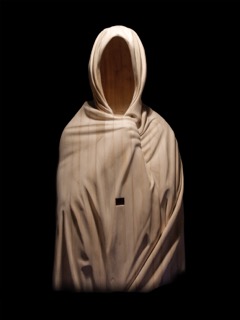 The making of art is a part of all human activity.
The making of art is a part of all human activity.
This means that human activity is endowed with imaginative transformation from the basic facts of a situation to an understandable relation. This is how we construct a world that we can understand and live in. When we write history we take what is found in memory and artfully construct a narrative that makes sense of the past. We can see the writing of the gospels in just this way. Each gospel writer receives stories and sayings and eyewitness accounts and weaves them into a continuous narrative of the life and death of Jesus. The gospels are different because each writer receives different material and uses his own imagination to write his gospel.
The above is true of the written arts, but what about the fine arts of sculpture and drawing and painting?
The same process is involved. The artist receives, for example, the accounts of the resurrection appearances of Jesus (this is not an arbitrary choice; it just so happens that this is the them of this year’s Mandorla Art Award). The artist reads the accounts and goes through a process of imaginative construction. If this leads to a simple illustration of a particular resurrection appearance then the artist has failed. The role of the artistic imagination is to give more than a simple illustration; the artist is after the transcendent.
At times it will overturn our presuppositions and tip us into reconsidering what we understand of the subject. At times it will show us something that had previously been hidden from us. In the literal arts this is the spur for preaching, the edge, the sharp point that leads to revelation. In the fine arts this is the factor that makes great art, art that stays with us posing more questions, giving us a relationship to the event that we had not thought possible.
Part of the motivation behind the Mandorla Art Award is to stimulate artists to see themselves as midwives to revelation, to a new way of seeing below the surface, as it were. The other part of the motivation is to stimulate churches to see the fine arts, alongside the literal and musical arts, as revealing a path to God. So many of our churches lack any form of visual art and this leaves our encounter with God lopsided. We lack the experience of walking into a church and being knocked off our feet by a profound rendition of a gospel scene.
This year the Mandorla Art Award will be held at Linton and Kay Gallery in Perth from the 15 – 24 July. All works, apart from the winner will be for sale.
For more information, visit http://www.mandorlaart.com/ or find them on Facebook.
Peter Sellick
Top image: Paul Captain, Mandorla Art Award winner, 2014.